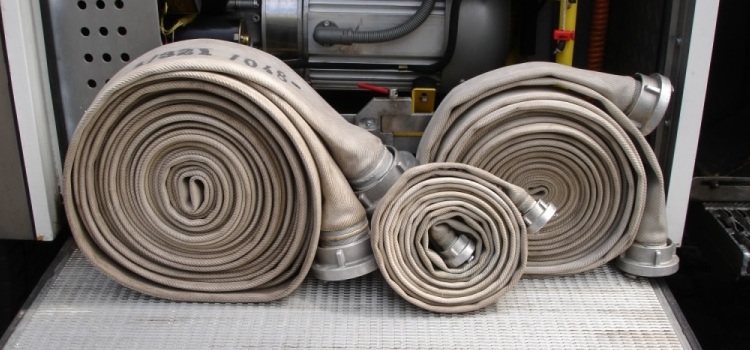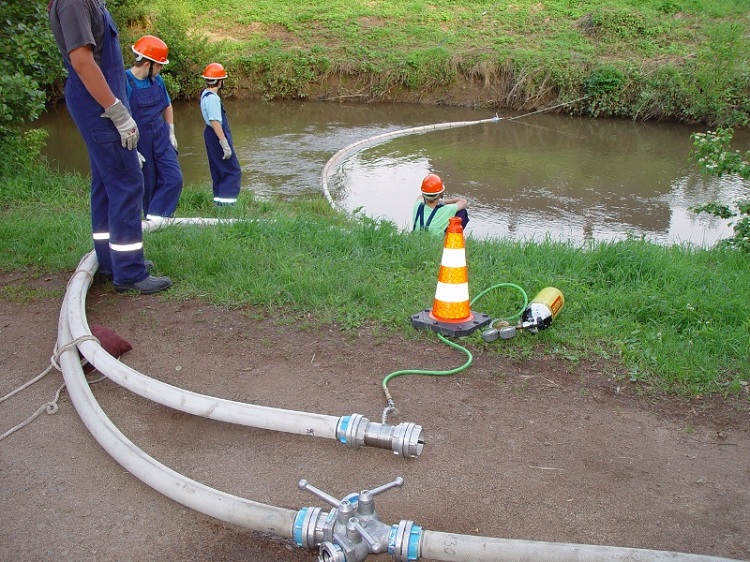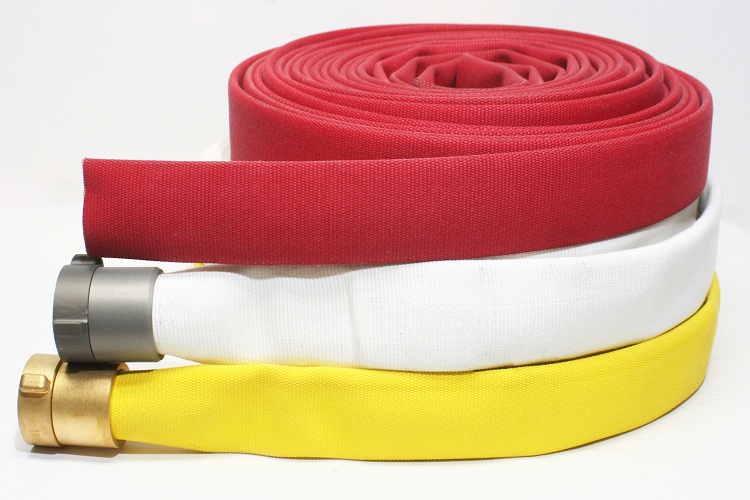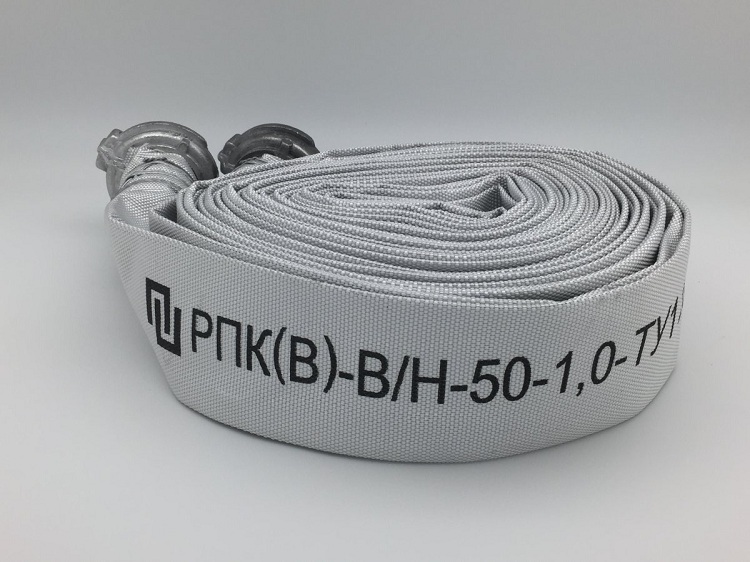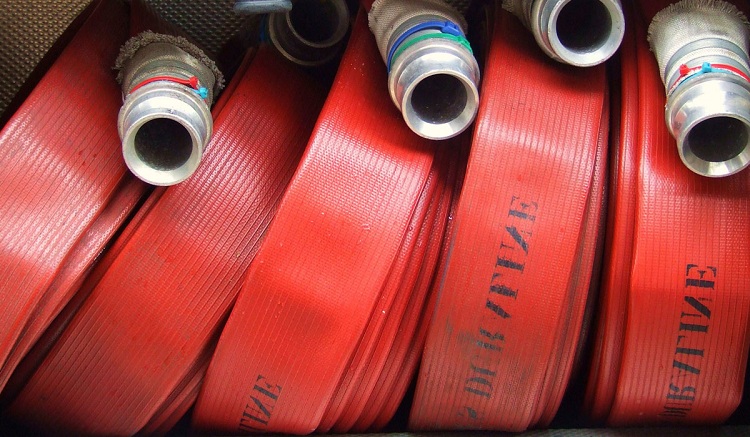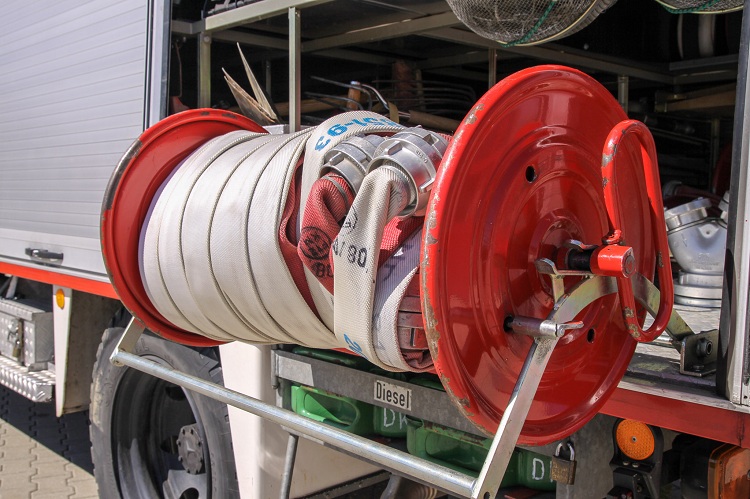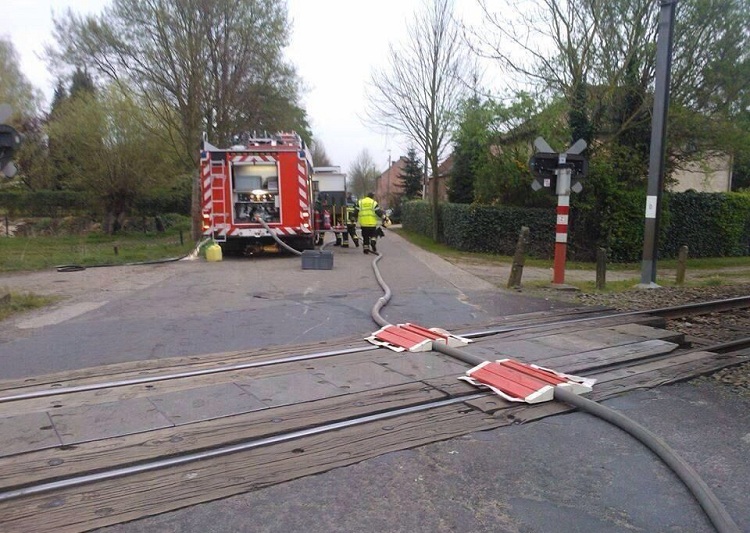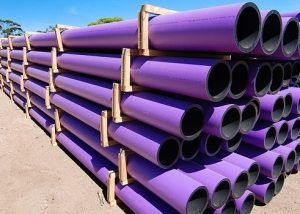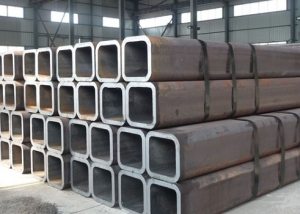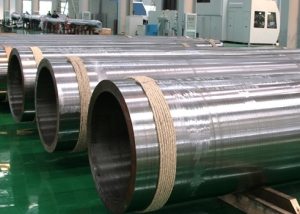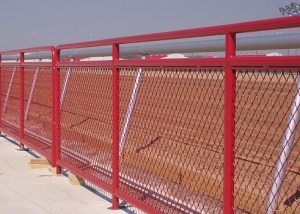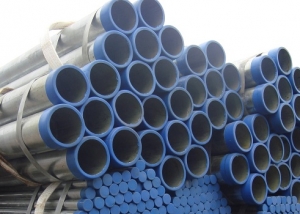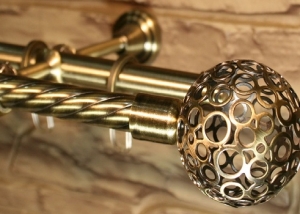Fire hoses and hose equipment form the basis of the fire fighting equipment used. The variety of technical equipment that is designed and manufactured to combat fire is huge. From simple mechanisms to devices for automatic monitoring and control of fire equipment - this is the range of modern equipment for fighting fire. A fire hose is a traditional to use, effective and indispensable attribute of a fire craft. Its use is universal and compulsory.
Content
Classification of sleeves, their main characteristics
Flexible hoses are classified by properties such as the specific application of the product. Long-term practice of production and practical use has identified such types of fire hoses as:
- flexible sleeve of the soaking-up action;
- pressure hose;
- sleeve of the pressure head soaking-up application.
The purpose of the sleeve, which works on the principle of liquid suction, is to draw water to replenish fire tanks of stationary and rolling stock. In such cases, water is pumped out using pumps and fire pumps. Such hoses are used not only for extinguishing fires and replenishing water supplies in fire extinguishing systems. Suction hoses are used to transport a wide variety of liquids. They are equipped not only in fire protection systems, but also with a variety of technical devices that use the principle of pumping.
The pressure hose delivers fluid to the fire extinguishing site or to another point of its consumption. Supply is carried out under overpressure. The end parts of a sleeve having a certain size are equipped with connecting heads. With their help, the required number of segments is built up to achieve the required length. They are mandatory for the full equipping of fire engines, installations, they are equipped with fire hydrants in buildings for various purposes - from public, to industrial, as well as private apartments and houses.
The pressure head suction fire hose combines the properties of two principles of operation and application and, thereby, provides wide functionality for the collection and transportation of liquids. They are widely used in equipping fire fighting equipment and other fields of application, as universal.
Note! Suction and pressure hoses are successfully used for pumping gasoline, industrial oils, other combustible and non-combustible substances, gases.
The main feature of fire hoses is their ability to quickly and efficiently deliver fluid to a fire site, remove water from a flooding site, and maintain water level where necessary. There are many technological features in the application of various types of fire hoses.The flexibility of the products allows their compact storage, rapid deployment to the required length. Standard specialized heads reliably connect the sleeve sections, creating the desired configuration and transport length.
Device and technical features of suction hoses
Since the requirements for fire hoses of the suction plan are somewhat different than for pressure hoses, their design is different. When water is absorbed, a negative pressure is created in the system, which contributes to the filling of the pipe. To prevent collapse of the structure, a rigid frame is built into its shell. Sleeve material is made from vulcanized rubber. For strength, it is covered with a fabric layer. All this gives the product relative flexibility. Latex fire hose is one of the varieties of the technological design of fire extinguishing means and pumping liquids.
Suction hoses do not have traditional connecting heads inherent in pressure structures. Special heads are applicable here, which provide the necessary connection to diverse technical devices: pumps, capacitive taps, and other connecting elements. Such sleeve designs have a rather large weight and relatively low flexibility. For such sleeves, the standard provides other parameters than for products without rigid reinforcement.
Suction hoses are divided into the corresponding classes:
- class B - designed for water intake;
- class B - works with liquids of fuels and lubricants: gasoline, fuel oil, oil, diesel fuel, etc .;
- KSh class - designed for pumping inorganic compounds such as acids, alkalis;
- class P - for transportation of liquid food products, such as alcohols and spirits, dairy products, drinking water.
Sleeves of this class are generally four meters long. The diameters used are from 5 to 20 centimeters. When used in a temperate climate, the range of operating temperatures of products ranges from minus 35 to plus 90 degrees Celsius.
The sleeve is pressure head. Design, purpose
The most popular and most sought after is a pressure hose type fire hose. The fluid in such a sleeve flows under high pressure. A rigid base is a fabric soaked with waterproofing material from the inside. A pressure fire hose, the standard of which requires the manufacturer to fulfill certain quality indicators, must have the following properties:
- high strength products that can withstand high water pressure;
- ability to withstand mechanical stresses on abrasion;
- increased resistance to weathering - sun rays, rot;
- to be neutral to hostile environment;
- have low internal resistance to water movement;
- have light weight and minimal dimensions in the roll.
They are classified by diameter and pressure in the line, these data are shown in table No. 1.
Table 1
| A type | Conditional pass | Pressure, MPa |
| RPM | 25, 40, 50, 65, 80 25, 40, 50, 65, 80, 90 150 |
3,0 (30,0) 1,6 (16,0) 1,2 (12,) |
| PKK | 25, 40, 50, 65 | 1,0 (10,0) |
- RPK - operation with fire hydrants of the corresponding pressure.
- RPM - work as a part of highways of the corresponding diameter and pressure.
They are classified by resistance to external factors by type: general and special performance. In turn, sleeves of special performance are divided into:
- heat-resistant, which are not afraid of high temperatures in case of fire;
- oil resistant, neutral to oil products;
- wear-resistant, withstanding long-term abrasive effects.
Helpful information! A special property to withstand high temperatures when laying a line along fire places is endowed with a percolated pressure hose.It is moistened over its entire surface with the liquid that it transports to the extinguishing site.
Structurally, the fluid injection hose consists of an external reinforcing frame woven from a fabric of natural or synthetic fibers and an internal waterproofing layer.
Sleeves woven from natural fibers are often used where there is a temperate climate and no frost. Linen or cotton threads are afraid of low temperatures, their base breaks when used. Such products are subject to decay. Their service life is short. Positive aspects - they keep the temperature due to self-humidification along the length of the highway, light and small in twisted state.
Synthetic fabric fire hoses come in the following designs:
- from rubberized reinforced fiber, when the rubber chamber is vulcanized with a fabric layer, ensuring its waterproofness;
- latex fire hoses, in which latex film serves as a waterproofing protective layer; the same latex layer is present in the reinforcing outer shell.
The pressure hose, which has a double-sided coating, is reliable and durable. The latex layer inside and outside provides high hydrostability and surface protection of the sleeve from mechanical stress. Such products are practical to use.
A table showing the ratio of the bore diameter, length of the sleeve and its mass is located below.
table 2
| D sleeves | Sleeve weight (no more), kg | ||
| 1m | 15 m | 20 m | |
| 25 | 0,25 | 3,75 | 5 |
| 40 | 0,34 | 5,1 | 6,8 |
| 50 | 0,45 | 6,75 | 9 |
| 65 | 0,55 | 8,25 | 11 |
| 80 | 0,65 | 9,75 | 13 |
| 90 | 0,83 | 12,45 | 16,6 |
| 150 | 1,2 | 18 | 24 |
Pressure head suction fire hose design
This type of sleeves is used both for the collection of fluid material, and for its injection and discharge, depending on the type of work. Products are made according to the tasks that they will perform. The sleeve itself consists of a textile carcass with rubber or latex internal and external protection. A metal spiral built into the sleeve body provides it with the necessary stiffness and relative flexibility necessary for its functioning.
On both edges, the sleeve is provided with cuffs that join it with the connecting fittings of various devices or other hoses and fluid transport elements. For the collection and transportation of flammable liquids, the suction and discharge hose is made of two layers of rubber - internal and external. The reinforcing layer is the textile, and a rigid spiral is the thread embedded in the frame.
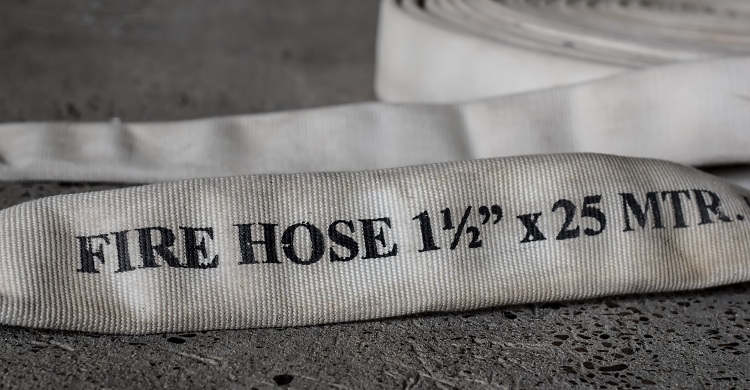
Hoses of all types are marked with information about their technical parameters, properties and purpose.
Technical marking and designations
Fire hoses and hose equipment must be provided with correct marking and designation standardized by the standard. Each production batch of fire hoses is supplied with a passport, which contains mandatory practical information:
- enterprise manufacturing products;
- calendar release date;
- number of technical specifications (technical conditions);
- serial number of the manufactured batch;
- quantitative composition of the party;
- diameter of released sleeves for a given batch;
- total length of sleeves supplied in the manufactured batch;
- mark of quality control department, on the fact of acceptance of goods and its compliance.
Typically, rubberized or latexed sleeves are sold in bays weighing 50 kg. They are cut into 20 meters. Before cutting the bay into parts, it is measured so that there is no waste, and the remainder of the bay was evenly distributed over the cut parts. Then, connecting heads of the GR type are imposed on the sleeves.
Important! The binding is made by galvanized wire, providing a tight fit and sealing joints.
At the place of practical operation of the fire hose, a form is drawn up in which the necessary information is recorded, including data from the input control.The responsible person for its operation monitors the maintenance of such a form. At a distance of approximately 1000 - 1500 mm from the connection head, additional marking is applied to the specific unit where this product is used.
Features of application, rules of operation and maintenance of hoses
Features of practical application, operating rules are described in detail in such a document as the instruction manual for fire hoses, which should be in any unit using products of this type. The attention of personnel is subject to storage of products, their proper operation, mandatory periodic maintenance of fire hoses.
During storage, it is necessary to monitor the correct laying of coils in the car, the condition of the coils on which the sleeves are wound. This protects the fire product from increased wear. Keep sleeves in appropriate conditions prescribed by the form, make sure that they are not affected by direct sunlight. Products must be clean, with serviceable connecting heads.
When working with fire hoses, it is required to monitor the correct routing of water supply lines. The track should not have sharp bends, kinks. It is necessary to constantly monitor the route of laying the sleeves, the places of their connections. Do not allow the line to run through burning debris and combustible substances, chemical compounds that could damage the high-pressure water supply path.
Note! Use an open area or road to lay the pipeline. Where the roadway intersects, special bridges should be used to protect the sleeve from damage. When the sleeve crosses obstacles with sharp bends, such as fences, fences, window openings, sharp turns, a special knee (saddle) should be used that will protect the track from sharp bending.
Vertical laying of the trunk also requires attention and the use of such equipment as a sleeve delay. It should be noted that at least one delay per sleeve is used for proper tracing. The pressure in the line must be raised gradually, trying to prevent possible water hammer. Latexed and simple sleeve should be protected from mechanical stress. For vertical movements, rope support must be used.
If a leak occurs, special sleeve clamps are used. For small, point injuries, a tape clamp is installed, and to eliminate leaks up to 10 cm in size, a corset clip is used. In winter conditions, the following is observed:
- at temperatures below 20 degrees, the water is supplied to the line at increased speeds of the pump, which slightly raises the temperature of the pumped water;
- water should be supplied from the deep layers of an open reservoir, where its temperature is higher;
- after the sleeves are in the cold, the remaining water immediately drains, the frost-bitten areas are heated by steam or hot water;
- transportation of frozen sleeves must be performed without kinks or kinks, which can damage the fabric, latex or rubber layer of the sleeve.
Before storage, fire hoses should be serviced. If necessary, repair, check the integrity of the shell, the density of the connecting heads. Fire-fighting tools should always be the number one alert and, upon request, provide water to the ignition site.
Maintenance of fire hoses requires not only the diligence of the staff, but also special equipment and devices. For these purposes, special machines are produced, such as:
- sleeve washing machines;
- machines for the binding of connecting heads;
- winding machine in the roll;
- special installation for drying and talcing of sleeves;
- containers in which soaking dirty products;
- hydraulic test rig.
This equipment simplifies the time-consuming process of working with fire hoses, their restoration, cleaning, testing, storage. All actions with the responsible part of the fire tool are recorded in the form. Timely tests of fire hoses. Knowledge of the range of fire fighting equipment helps to use products correctly, to keep them in proper readiness for emergency use.
